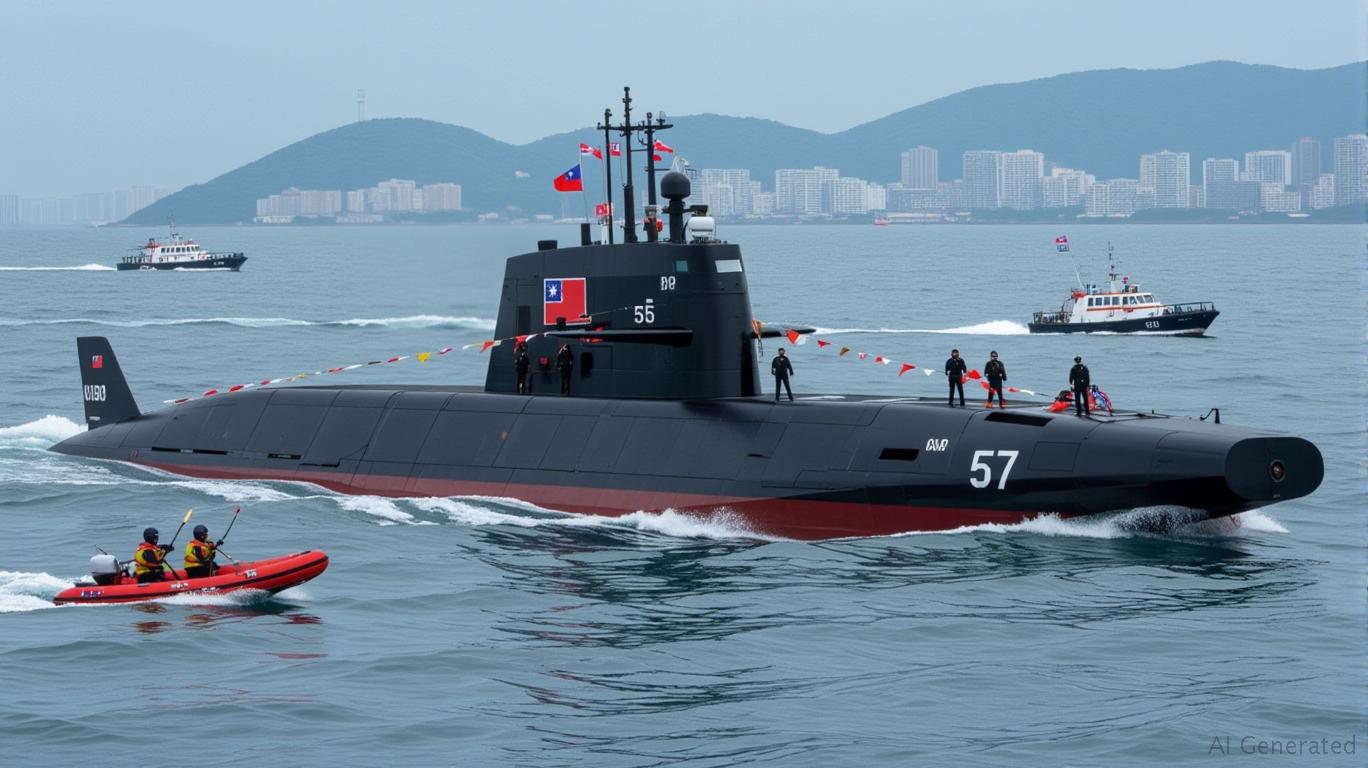The geopolitical landscape in the Indo-Pacific has never been more volatile, with Taiwan at the epicenter of escalating tensions. As China’s military assertiveness grows—marked by frequent air and sea incursions, cyberattacks, and economic coercion—Taiwan’s defense strategy is undergoing a rapid transformation. This shift presents both risks and opportunities for investors, particularly in the defense and technology sectors. Below, we analyze Taiwan’s military preparedness, the challenges it faces, and the investment themes that could redefine the region’s security dynamics.
A Budgetary Surge, But Delivery Delays Loom
Taiwan’s defense budget has seen consecutive annual increases, rising to $19.1 billion in 2024 and $20.25 billion in 2025. This reflects a strategic pivot toward modernization, with a focus on asymmetric capabilities like missiles, drones, and submarine warfare. However, systemic delays in U.S. arms procurement—Taiwan’s primary supplier—threaten to undermine these efforts.

The U.S. has been Taiwan’s lifeline for decades, but recent hiccups reveal vulnerabilities. The cancellation of the M109A6 Paladin howitzer program and delays in F-16V fighter jet deliveries highlight a critical flaw: Taiwan’s overreliance on U.S. production capacity. For instance, Stinger missile deliveries are now slated for 2031, with most contracts still unfulfilled. Meanwhile, U.S. defense giants like Lockheed Martin (LMT) and Raytheon Technologies (RTX)—key suppliers—face their own bottlenecks.
Investors should note that while U.S. defense stocks benefit from Taiwan’s demand, delays could strain diplomatic ties and weaken Taipei’s negotiating leverage. A more sustainable path lies in Taiwan’s indigenous defense industry, which is now producing over 1,000 missiles annually and advancing drone and submarine technologies.
Historically, however, these companies have shown resilience. A backtest from 2022 to present reveals that a buy-and-hold strategy during earnings misses for LMT and RTX yielded a 10.21% return, with a 100% win rate over 3-, 10-, and 30-day periods. This suggests that market confidence in their long-term prospects may outweigh short-term disruptions, even as supply chain bottlenecks persist.
The Rise of Indigenous Defense: A Portfolio of Innovation
Taiwan’s push for self-reliance is yielding tangible results. Its submarine program, aiming to build seven advanced vessels by 2038, has already launched the Hai Kun, a hybrid diesel-electric design. Meanwhile, the Aerospace Industrial Development Corporation (AIDC) is expanding production of fighter jets like the F-CK-1 Ching-Kuo, which now make up 34% of Taiwan’s air force fleet.
The drone sector offers the most immediate upside. Taiwan UAV, EVGA, and Coretronic are developing reconnaissance and combat drones, while the government has allocated NT$10.4 billion ($350 million) for MQ-9B UAVs to enhance maritime surveillance. Unmanned systems—both aerial and underwater—are likely to see explosive growth as Taiwan seeks to counter China’s quantitative edge.
Additionally, Taiwan’s missile development—including the Hsiung Feng III and Tien Kung III systems—is bolstered by over NT$160 billion (64% of a special defense fund) in funding. This focus on precision strike capabilities positions Taiwanese firms at the forefront of a global trend toward asymmetric warfare.
Geopolitical Risks and Strategic Adjustments
Taiwan’s defense modernization is not without pitfalls. Over 98% of its arms imports come from the U.S., creating dependency on Washington’s political will and bureaucratic efficiency. The stalled MH-60R helicopter deal and inconsistent U.S. export policies underscore the fragility of this relationship.
Moreover, China’s gray-zone tactics—economic coercion, cyberattacks, and hybrid warfare—force Taiwan to allocate resources across multiple fronts. The recent satellite network initiative, akin to Starlink, aims to counter Beijing’s information dominance, but its success hinges on technological breakthroughs and international partnerships.
Investors should prioritize firms with diversified revenue streams and exposure to critical technologies:
– Missile systems (e.g., Chung-Shan Institute of Science and Technology’s suppliers).
– Drone manufacturing (Taiwan UAV, EVGA).
– Satellite infrastructure (local tech firms collaborating with U.S. or European partners).
Investment Thesis: Diversify, but Look for Resilience
Taiwan’s defense sector is a microcosm of global geopolitical risk. While U.S. defense stocks remain beneficiaries of regional instability, their performance is tied to production bottlenecks and diplomatic volatility. A more compelling play lies in Taiwan’s indigenous industry, which offers:
1. Domestic demand certainty: Taiwan’s budget allocations are politically insulated from U.S. bureaucracy.
2. Export potential: Asymmetric warfare technologies (e.g., missiles, drones) are in demand globally.
3. Technological leapfrogging: Taiwan’s integration of AI and advanced manufacturing could position it as a niche supplier.
Risk Factors:
– U.S.-China relations: A cooling in U.S.-China tensions could reduce urgency for Taiwan’s defense spending.
– Technological gaps: Taiwan’s indigenous systems must prove their parity with U.S. equivalents.
– Political shifts: A more conciliatory Taiwan government could temper military spending.
Conclusion: A Strategic Bet on Resilience
Taiwan’s defense modernization is a race against time—and against Beijing’s growing capabilities. For investors, the key is to distinguish between short-term risks (U.S. delivery delays, political uncertainty) and long-term opportunities (indigenous innovation, asymmetric tech).
The defense sector is a volatile but high-reward arena. Investors should overweight companies with exposure to missile production, unmanned systems, and satellite tech, while maintaining a cautious stance on U.S. defense giants until supply chain issues are resolved. Taiwan’s journey toward self-reliance is not just about survival—it’s a blueprint for how smaller nations can leverage technology to counterbalance superpower threats.
In this geopolitical storm, the defense sector is both a shield and a sword. For those willing to navigate the risks, it could be a shield and a sword for their portfolios too.